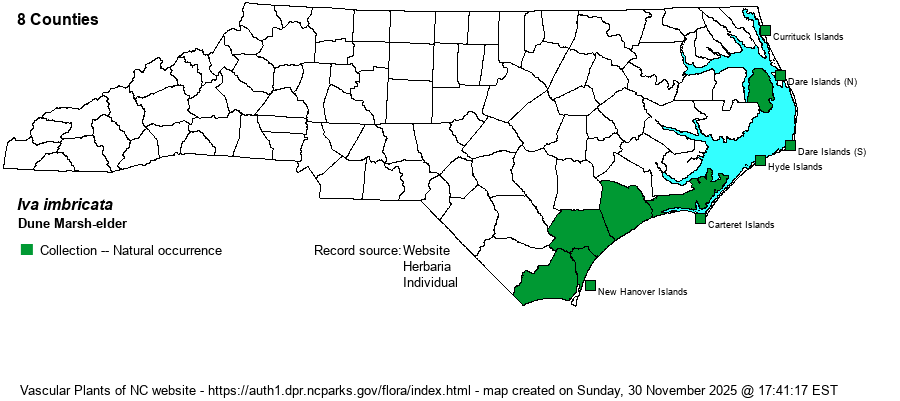| Author | Walter | |
| Distribution | Strictly coastal, and known from all coastal counties in the state. Unlike Iva frutescens, which inhabits marshes back from the ocean and on the mainland, this species occurs in dunes and thus the majority of records are from dunes fronting the Atlantic.
This is a Southern coastal species occurring north only to southern VA, and then around the Atlantic and Gulf coasts to LA.
| |
| Abundance | Common and usually easily found in most areas of coastal dunes. | |
| Habitat | It strictly occurs in deep sands of beach dunes, upper beaches, and sand flats at the ends of islands. As Weakley (2018) points out, it is often the perennial species that grows closest to the ocean. |
| Phenology | Blooms and fruits from late August to November. | |
| Identification | This is a tardily deciduous, usually decumbent shrub that grows barely to 1-2 feet tall, often with longer branches that sprawl on or close to the ground. The leaves are quite succulent and thick, being elliptical and entire-looking, to about 2 inches long. As it is one of the very few woody plants growing on dunes, the thick and fleshy elliptical leaves should be enough for identification, but the long “spike-like” inflorescence of small flowers and fruits on an erect, terminal branch are noticeable in late summer and fall. | |
| Taxonomic Comments | None
| |
| Other Common Name(s) | Seacoast Marsh-elder | |
| State Rank | S3 [S4] | |
| Global Rank | G5? | |
| State Status | | |
| US Status | | |
| USACE-agcp | FACW link |
| USACE-emp | | |

